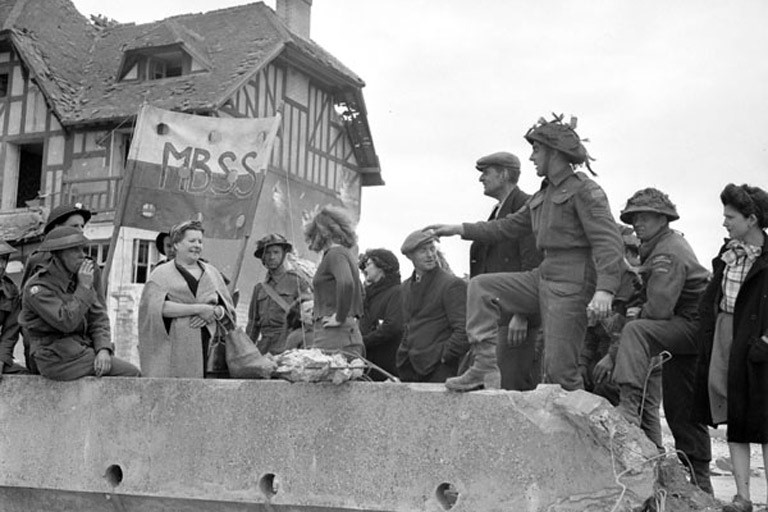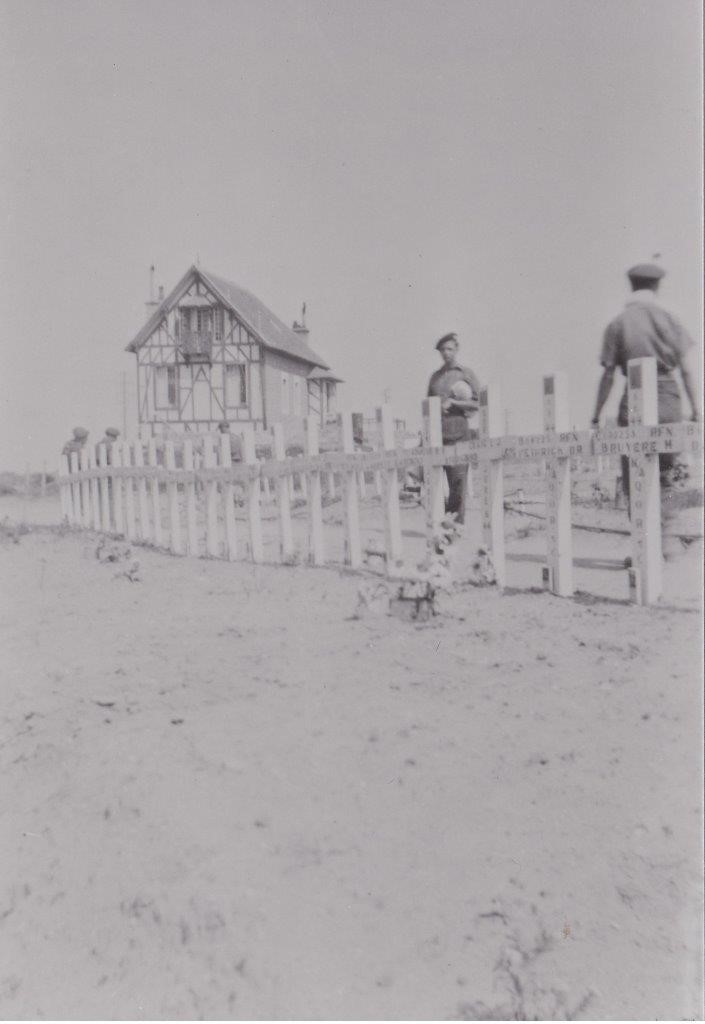Canada House - Handout
This publication is available upon request in alternate formats. PDF Version
For over 90 years, a grand two-storey home has sat alone on a beach in the village of Bernières-sur-Mer, in Normandy, France, looking toward England across the English Channel.
It wasn’t built by Canadians, and Canadians don’t own it. But on June 6, 1944, it became a part of Canadian military history. On that day, it was the first house to be liberated during Operation Overlord, the Allied military operation to try to liberate France.
Determined to end four years of war, on that stormy morning in June, Canadians—along with British and American troops—invaded the coast of France that had been occupied by German army. The Canadians came to France on airplanes and then parachuted in, or they came ashore on boats at a beach that had been code named “Juno.” Within 20 minutes of landing on the beach, the soldiers of the Queen’s Own Rifles of Canada (a regiment from Toronto, Ontario) had opened fire, pushing out the German soldiers who had claimed the house as their own. A French-Canadian unit, Le Régiment de la Chaudière, soon joined the fight to assist.
The house became a landmark for the troops because almost every Canadian that landed on Juno Beach at that time saw the large, timber home as they came onto the beach from their boats. Miraculously, the home survived the war.
Sadly, more than 100 Canadians were killed on the beach in front of the home during the first few minutes of the battle.
One month after the soldiers had landed on Juno Beach, several Canadian men from the Queen’s Own Rifles went back to Juno Beach to pay tribute to their friends who had died. The soldiers spent time remembering the friends they had lost at the beach. They went to lay flowers on the graves of friends who had died and were buried there. Here, they are pictured at the crosses in front of house on the beach.
Because of the house’s historic role, thousands of people still visit it each year. Now known as La Maison des Canadiens (in French) or Canada House (in English), it is a landmark that stands for the Canadian sacrifice in Normandy. It’s a place where people can remember the Canadians who helped liberate the people of France.
- Date modified:

